
The 2018 Creative Director Track: Key Takeaways
Meet Chicago’s copy and content powerhouse. Susan Jenks is a freelance writer who partners with businesses and agencies to generate success. Whether she’s building multi-platform campaigns, generating new business leads or boosting SEO rankings, Susan brings fearlessness, humor and oh-yeah enthusiasm into everything she writes. Check her out at susanjenks.com.
This was my first 3% Conference—and definitely not my last. The incredible Megan Colleen McGlynn recommended me to be a track writer, and I couldn’t have been more excited. I accepted immediately. And then I got nervous. I had never written anything quite like this before. Plus, the people participating in this conference are amazing! Can I do them justice?
After two days of inspiration and catharsis, I still feel supercharged.
And I realize that my initial insecurity is exactly what the 3% Movement is all about: getting out of your comfort zone, finding your power, doing what you can do to support equality, and, sharing your gratitude. So thank you very much, MCM and 3%. For making everyday Girlsday.
Now, let’s dive into the Creative Track. It’s true: there’s much work ahead for our industry to achieve true diversity. Yet the speakers and panels prove there’s so much being done, and so much that’s working. Ready to be supercharged? Check out the incredible initiatives happening in advertising. Tap into your power. And do everything you can to turn the (inequitable! archaic! ineffective!) status quo upside down.
SESSION 1: HOW TO BE A GREAT CREATIVE LEADER
Speaker: Corina Falusi
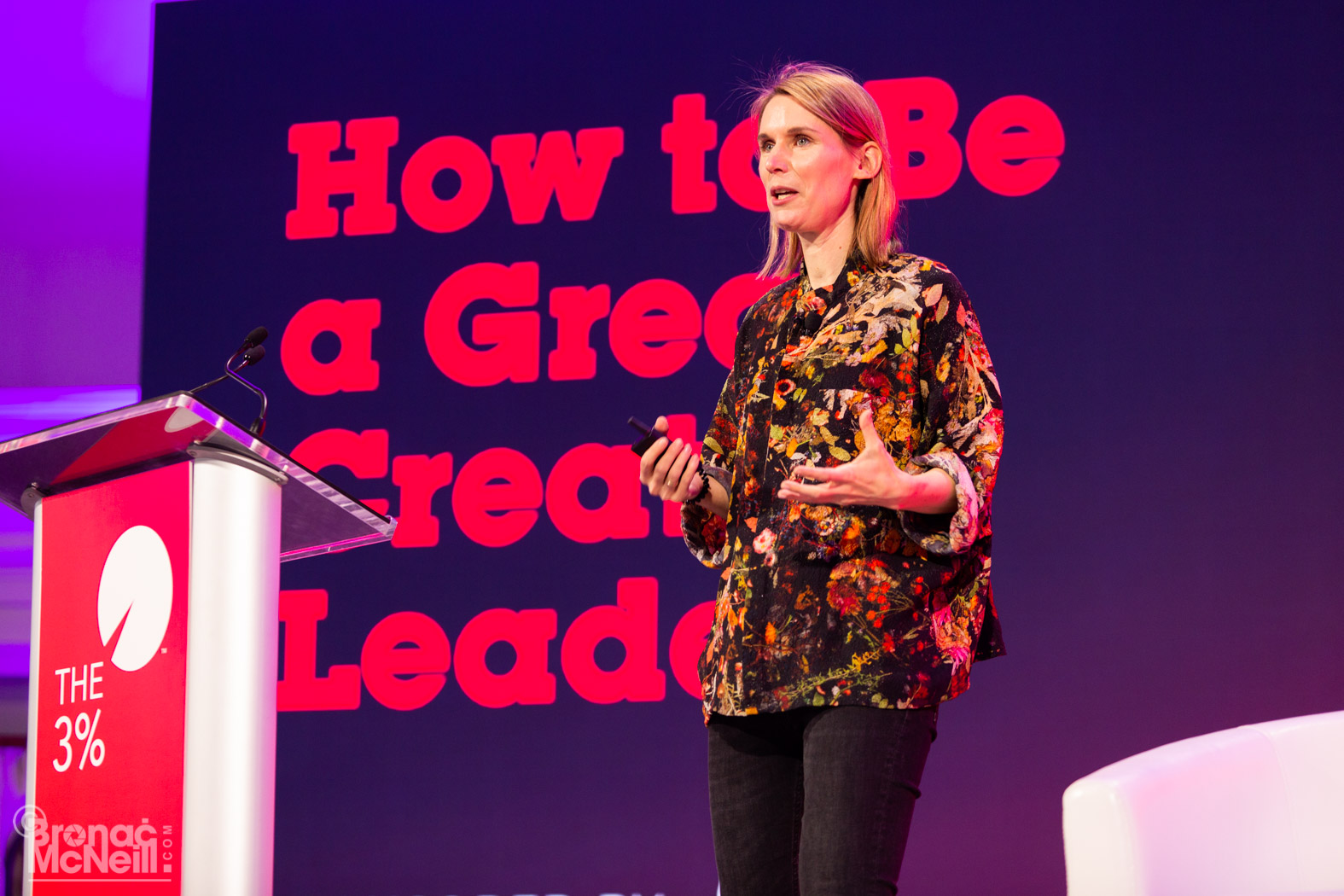
On paper, she’s CCO and partner at Mother New York. But, Falusi revealed her real job is to create an environment that stifles the voice that says you cannot and encourages the voice to say “of course you can.”
How? First, she doesn’t believe that creatives work in groups of shiny, happy people. Creativity is more of a lone, strange affair. It’s painful. It’s introverted. It’s personal. Yes, there’s sharing and happiness, but not at first. Most of the time, we are not hyper-happy people sitting around brainstorming. And someone ought to let Getty Images know. For kicks, search an image library for “creative office.” Is this you at your most creative?
Want to be a superstar like Falusi? Follow her five guidelines. Then call me. I’ll probably want to work with you.
Don’t hire yourself.
To achieve true diversity, find people who DON’T think like you. As Falusi said, “White men hire white men and do white men work.” Instead, hire misfits and combine them with polar opposites to generate unusual ideas. Mix introverts and extroverts. Combine cultures and opinions. She said, “There will be tension. There will be explosions. But the ideas will be much more original.”
Let them cry.
Creatives are emotional and volatile. (WHO ARE YOU CALLING EMOTIONAL?!) She encouraged leaders to harness it. Hire that emotionally unstable AD. Celebrate differences—it’s the secret sauce to creativity. Don’t judge people, give them the freedom to get it out. Then, they can be their best.
Say what you think.
To give structure to your creative culture, say what you think. Creatives don’t just need feedback, they need clear feedback. And they deserve it. They need to know where they stand and how to get better. You don’t have to be mean. Just be truthful, and even blunt.
Shock creatives into being more creative.
Falusi believes creative people are constantly unhappy. If they don’t complain, they are probably untalented (insert nervous laughter). Shock them with an impossible ask—one they don't think they are ready for—and they will rise above insecurities and succeed. Show then you trust them and are confident in them. Send them on an adventure. Make them prove themselves. Scare them, and they’ll come to life.
Step out of the way.
A self-described control freak, Falusi said this is the hardest thing to do, but perhaps the most important. Don’t tell creatives what to do. Provide the right environment to let them do what they do best. Don’t interfere. Make creatives better by getting out of the way.
Listening to her, I imagined what it would be like to work at her agency. Particularly at that critical time in my agency life when I didn’t get the feedback I needed. When my manager’s feedback was not only mean, but completely unuseful. When I tried to jump through imaginary hoops that kept moving. When I left a team I loved. Leaders, do yourself (and your creatives) a solid, and get inspired by Falusi’s incredible advice.
SESSION 2: IF ONLY ADVERTISING COULD USE ITS POWERS FOR GOOD
Panel Moderator: Lauren Wesley Wilson
Panelists: Jason Carmel, Suresh Nair, Jason Sperling, Cecelia Wogan-Silva
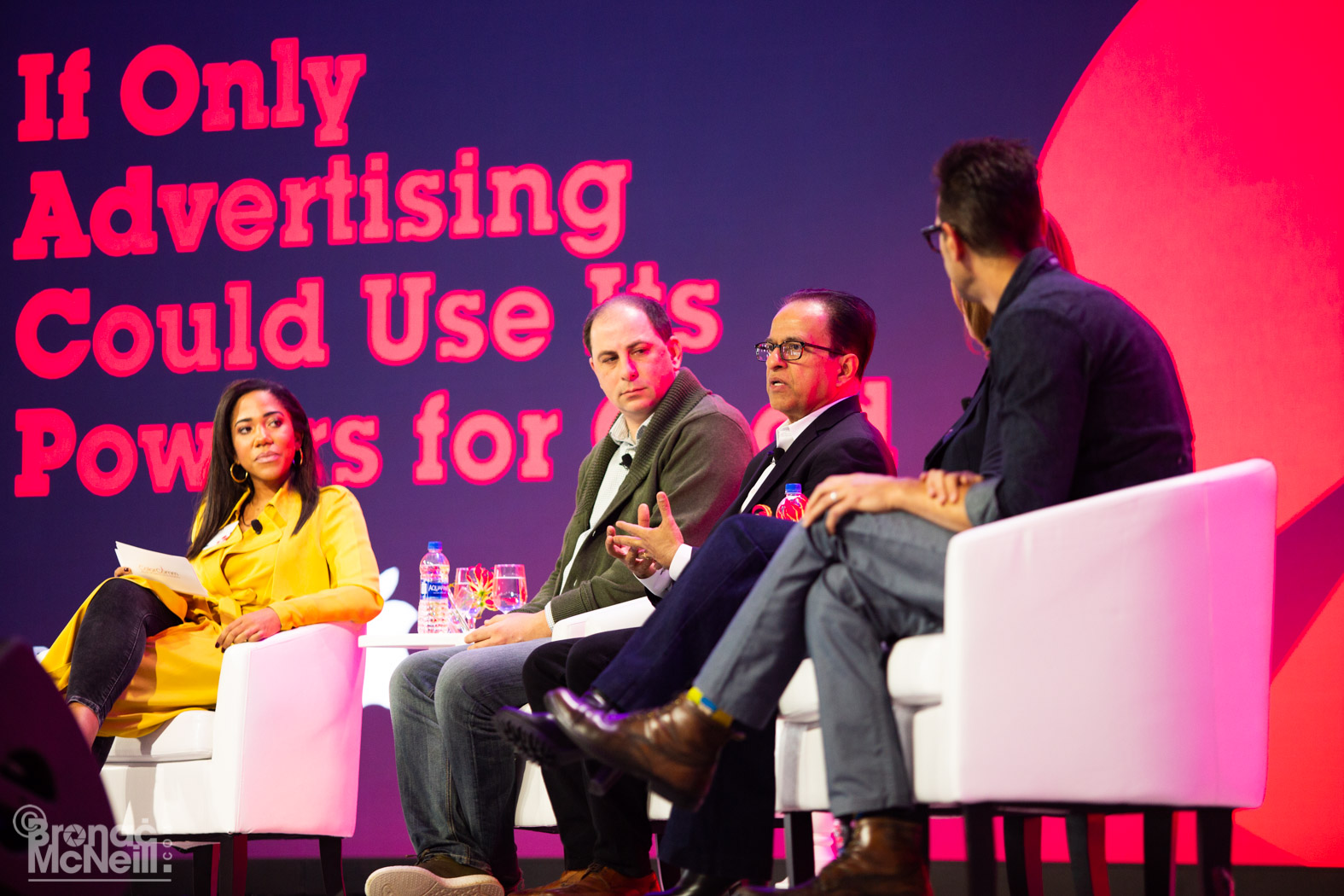
If you haven’t seen Nike’s commercial with Colin Kaepernick and Pepsi’s commercial with Kendall Jenner, do so stat. And be sure to delve into the comments. Both were made with the intention to support a cause, yet one resulted in big sales and brand love. The other crumbled in embarrassment and apologies.
So, how does a brand bridge social good and smart marketing? Moderator Lauren Wesley Wilson, the founder of ColorComm, Inc., introduced us to an incredible panel that helped brands successfully navigate the labyrinth of social activism.
Social activism is important for brands.
Why? Cecelia Wogan-Silva, Global Director of Creative Development at Google, pointed out that public trust is at an all-time low. The responsibility for corporations to lead has never been higher. Later, Jason Sperling, SVP/Chief of Creative Development at RPA, built on this idea, saying that corporations understand that they need to make money. But they need a strategy if they look to social activism to do so.
Brands that make bold moves have to be prepared for the risk.
Sperling admitted that while supporting Kaepernick was a positive thing to a lot of folks, it was a negative to just as many others. As a brand, Wogan-Silva added, you have to know how bold you want to go.
Commit to it. Live it. Breathe it. Stay the course.
It’s not enough to run a single ad in support of a cause. Just like any marketing, social-positive campaigns are a multi-armed commitment. Wogan-Silva said that brands need to genuinely support the effort. Customers look for and know the difference—and, the minute you don’t live those values out loud, you will be found out.
When does social activism work best?
Jason Carmel, Global Chief Data Officer at POSSIBLE, suggested that the DNA of a brand should naturally support social action. The connection shouldn’t be forced.
What if a client is heading to disaster?
This is when data comes in, according to Wogan-Silva. Keep checking the numbers. Test and test. Talk to focus groups. Otherwise, having a conversation about a tough subject, like race, can easily go wrong.
Suresh Nair, Chief Creative Intelligence Officer of GREY Group, added that agencies have non-data tools to help clients stay on track, like the creative brief. In fact, GREY worked with the 3% Movement to add this question to their creative brief: “How will you make sure this idea will represent and respect the world around us.”
Diversity and Feedback.
Asking a diverse group of people for feedback is super-effective for sniffing out problems, continued Nair. Success happens when good ideas are baked into innovations and carried out by diverse teams. Carmel said his team has panels to run their work through to see what they’re getting wrong and what they’re doing right.
The Redhead Statistic.
Early in the conversation, Sperling told us one of his rules. In the U.S. population of redheads is comparable to the number of people in wheelchairs. So when he sees a comp with an image of a redhead, he asks to include one with a person in a wheelchair, too.
SESSION 3: KEYNOTE: CREATIVES ARE DIFFERENT
Panel Moderator: Kathy Delaney
Panelists: Jenny Bergman, Jennifer Hohn, Rosa T. Sheng, Rich Silverstein
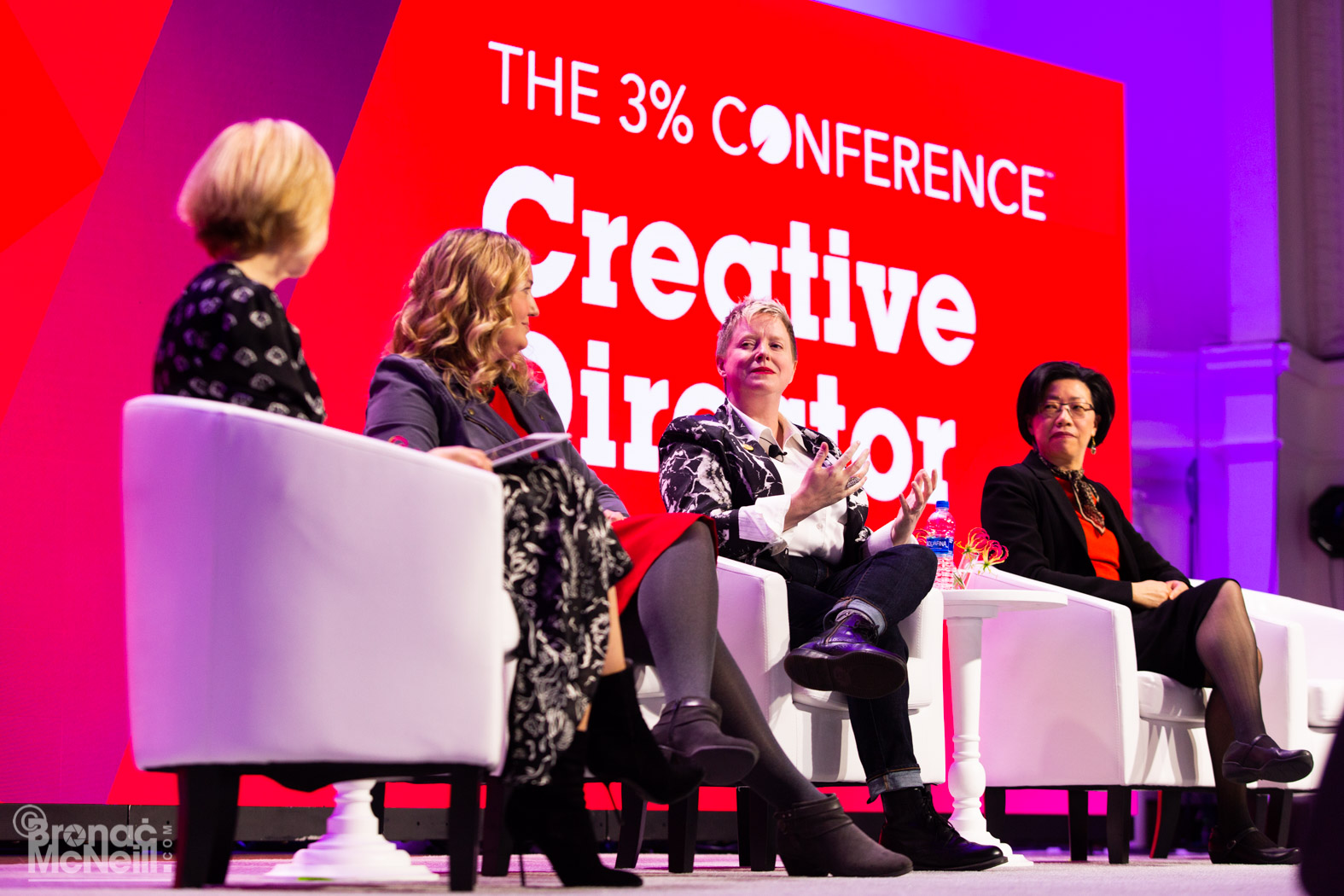
Successful creative can be fueled by surprising energy sources, like dyslexia, anxiety, depression, ADHD, and insecurity. People with unique mindsets are often uniquely qualified for innovative and creative problem-solving.
Kathy Delaney, Global Chief Creative Officer of Publicis Health, moderated a compelling panel that shared ideas on building environments that nurture diversity and environments that help introverts and extroverts rise, shine, and thrive—together.
Creative are wired differently
Rich Silverstein, Co-chairman/Partner of Goodby Silverstein & Partners, couldn’t make the conference in person. So he sent a short video. In it, he shared how he is wired differently. How he can be sensitive and thin-skinned. And he’s ok with that. That these differences make him work better and make him a good leader.
Empathy is a tool for creatives.
Leading, according to Jennifer Hohn, Executive Creative Director, is about really knowing the people on our team. Making sure we are setting the stage for everyone—with every mindset—to thrive.
Hire people who think in a variety of way.
Jenny Bergman, Founder and Creative Director of The Secret Bureau of Art and Design, has learned to use her own anxiety and depression to her advantage. Anxiety moves her forward. In anxious times, she’s incredibly productive. If she gets depressed, it’s a good time to plan.
Rosa T. Sheng, President and Founder of Equity by Design, suggests bringing groups of collaborators together to create ideas. Not being accepted or heard, really affects ideation. So, to make everyone heard, she uses sticky notes and dot voting, where ideas are shared on sticky notes and each participant dots their preferred ideas. Then the group discusses every idea.
“Open offices are my idea of hell.”
Bergman admitted that open offices don’t work for her. Hohn added that some creatives like the camaraderie and back and forth. That there’s no right or wrong way to do it, everyone has their own style. As many agencies have an open floor plan, our panel shared some helpful suggestions:
- Create quiet spaces where creatives can process ideas and be productive
- Turn monitors to the wall to keep works in progress private
- Consider flexible hours, not everyone’s brain is productive from 9 to 5
Hey, that was my idea!
Sheng talked about the universal curse of the group brainstorm: idea hijacking. When someone shares an idea but it doesn’t generate much attention. Then, boom. Five minutes later, another person tosses out the SAME IDEA. And takes credit for it. (We’ve all been there, no?) As frustrating as it is, she continued, idea hijacking is (probably) not intentional—the hijacker was probably in their own head while you were speaking. And that you should always write your ideas down. So, if your idea has been hijacked, you can acknowledge its origin. Then add to it. Build on it.
Let creatives create.
Delaney shared this takeaway: creatives need different situations to make creativity happen. Make it ok for them to ask for what they need. As long as they are creating great work, there’s no reason for a leader to say no.
Creatives, stop apologizing.
To wrap up, Delany said that it is ok that you are wired differently. Your specialness is what makes you creative. Embrace it— stand out! But it’s up to you to ask for what you need. (I’ll add that finding the courage to ask is part of the battle.)
Final take: Even diversity is diverse.
Cultures. Race. Gender. Citizenship. Physical differences. Mental mindsets. It’s important to bring all of these diversities together in the creative field. And if we do, Delaney concluded, our industry and our ideas will be better.
SESSION 4: REPRESENTATION MATTERS
Panel Moderator: Evita Puente
Panelists: Mina Enauati-Uzeta, Gina Glantz, Louise Green, Lisa Kenny, Josua Kissi
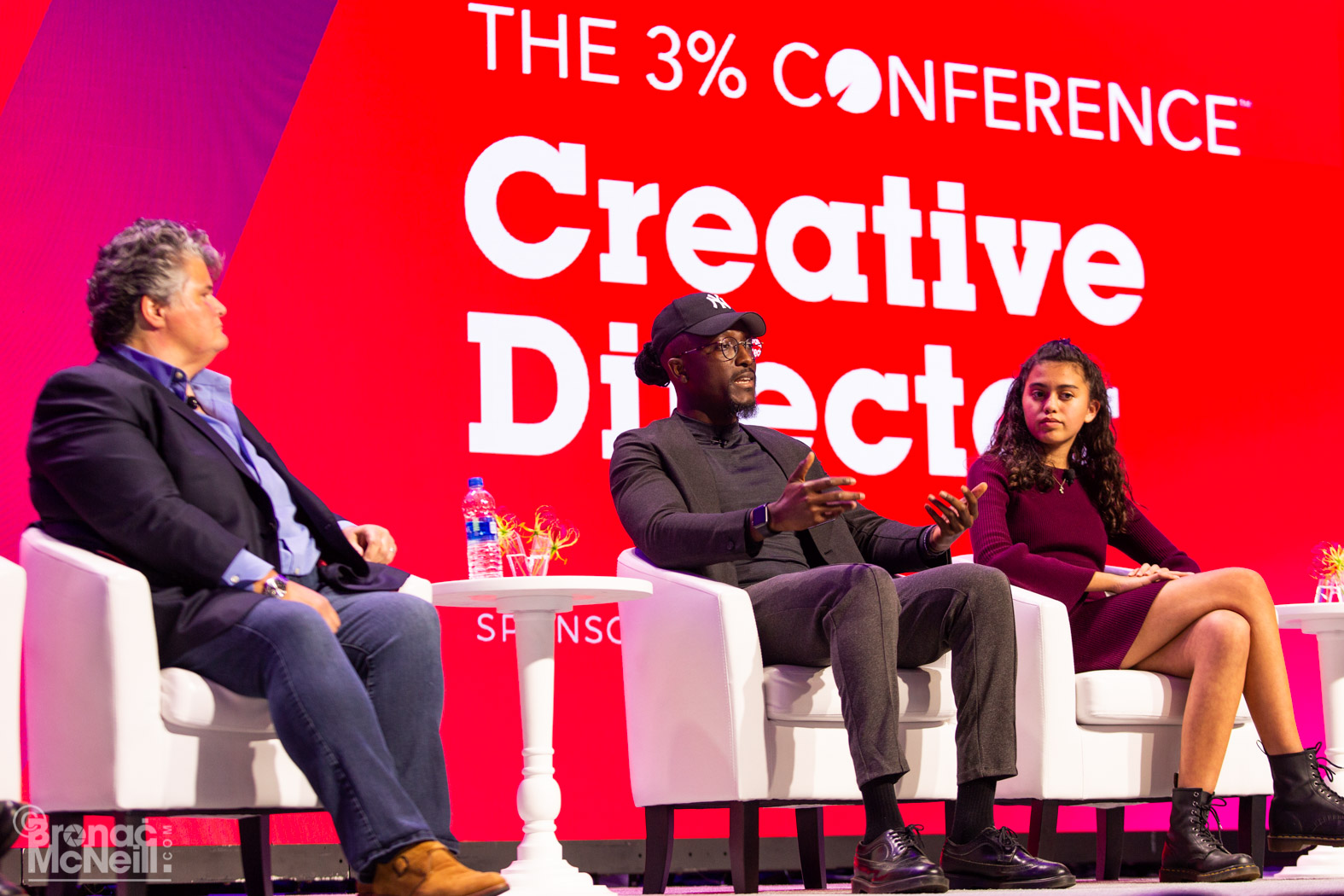
First off, I love-loved how Evita Puente, Creative Agitator, moderated this panel “cafecito” style, like a conversation. She started by asking each of these visionaries to explain their motivation, which brought the discussion to life.
- Giving aging women power in today’s world
- Making brands be culturally relevant
- Untethering athletic dreams from dress size
- Ensuring everyone has the same opportunities
- Showing the world how people identify themselves
- Living in the possibility of each of us
See? Epic. And they were just getting started. Here’s my take on their powerful cafecito:
Everyone has a gender story.
When (Lisa Kenny, Executive Director of Gender Spectrum) said, there’s at least one moment in life that defines how a person sees their gender, I really stopped to think. She talked about a little boy realizing his dad didn’t want him in the kitchen with grandma. How the boy felt shame for doing something he liked, and never cooked again. Reader, consider this. When did you first feel defined by your gender?
Gender isn’t only a women’s issue.
Kenny also brought up that gender is seen as a woman’s issue. Men have a gender and they have also been damaged by traditional, binary limitations. Until men understand that, they’re never going to own it. But once they do, there is opportunity for them to help brands create more genuine connections.
More than a “before” picture.
When it comes to plus-size women, Louise Green—Consultant, Activist and Author of Big Fit Girl—said most brands assume these women are on a warpath to be a smaller version of themselves. Plus-size women are commonly shown as a “before” picture, something to NOT be. Or they aren’t being shown at all. But, if plus-sized women can’t see themselves authentically in an ad’s message, they won’t connect to it.
Reflecting reality.
Diversity is about showing people’s stories in the most authentic way. Joshua Kissi, Co-Founder of TONL and Street Etiquette, believes stock photography needs to use models and situations that reflect real life. It helps real people tell their stories. And it helps brands tell real stories, too.
Giving aging women power.
Gina Glantz, Founder of GenderAvenger, asserted that aging women are NOT falling down and calling for help. They out live and outspend men. They are the future of wealth, and brands are missing out.
Brands need to do the right thing.
The teen on the panel, Mina Enayati-Uzeta (9th Grader, journalist, designer, traveler, creative), said that brands need to stand out by being transparent. Being honest about intentions. Being genuine. That’s what really connects with real people.
Change is happening in so many ways.
The panel shared some examples of (amazing) changes. At home, there’s a fitness app that speaks to all sizes and fitness levels: it doesn’t require weight data, it uses models of many sizes, and it includes exercises for basic mobility. At work, people are acknowledging their gender stories and truths, and bringing their full selves to their jobs. After school, kids who aren’t old enough to vote, are educating voters and preparing other kids to vote when they are ready. And every day, people are becoming activists, telling brands (through social media) that they want to be heard—and brands are listening.
What can creatives and creative leaders do?
Be a voice for the full spectrum of diversity. Use your privilege (everybody has privilege) to bring other people up. Put diversity in your casting specs—and keep doing so. Think bigger. Think outside of your life, and into other people’s realities.
What do you think? I think I like cafecito. May I have another?
SESSION 5: PROTECTING YOUR PEOPLE
Panel Moderator: Aaron Ackermann
Panelists: Karrelle Dixon, Heidi Hackemer, Liz Valentine
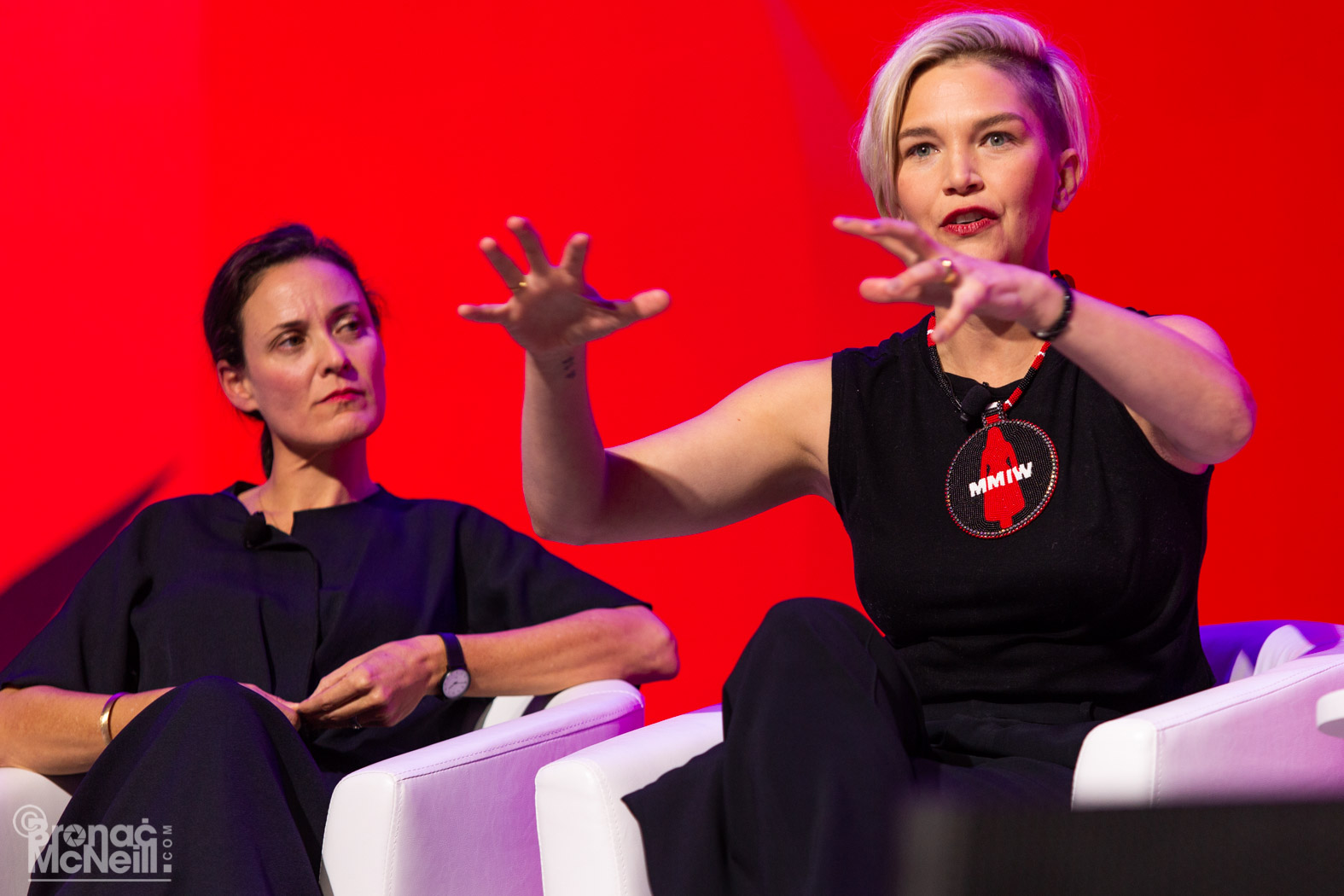
Combating creative burnout and toxicity is a pervasive challenge for creative leaders. To address this problem, moderator Aaron Ackerman, Director of Marketing Communications for Apple, talked with a power panel to share provocative ideas for inspiring creative teams to greatness while protecting them from burnout.
It was fascinating to learn how these leaders keep their team engaged, focused and moving forward. Whether you read it here or watch the vid, I urge every CD to use this advice to take their team upward.
Get to know (and like) your client.
It’s easier to commit yourself to great work when you like and respect who you’re working for. Liz Valentine, CEO and Co-founder of Swift, said it’s hard to protect people if everyone on the team doesn’t value the client. So her agency strives to be selective about their clients so they can really understand them—and work hard for them. She also encourages the client to get to really know their whole team.
Set policies that actually work.
Heidi Hackemer believes the ad industry kills talent. As founder of Wolf & Wilhelmine, she never assigns weekend work. In fact, it’s in their SOWs (statements of work) and pitch decks. She also believes that most creatives take LESS time off with unlimited-vacation policies. So at her agency, it’s policy for employees to take a minimum of two black-out weeks a year.
She said, “agencies have to stop talking about it and put policies in place to support the team, people of color and women.” Further, by stating these protective policies up front to the clients, it works to weed out clients who don’t want to work that way.
Establish boundaries with the client.
“The time you have the power to set boundaries with the client,” said Karrelle Dixon, Managing Director at Wieden+Kennedy, “is right before you sign the contract.” That’s when you can have the conversation around the culture of the agency. Your long-term strategy and the importance of your people is the lifeblood of your company.
Dictate terms with senior management.
To protect his team when the senior level has divergent ideas, Dixon stands up for his people and helps them dictate the terms—what will and won’t work for the team. He added that if you are running a successful team, you need to brag about that to leadership. Talk about your success. That gives you the leverage to push back.
Enforcing your values.
By establishing their own agencies, Valentine and Hackemer are able to take a strong stand for their teams. From the get-go, Valentine committed to paying 100% of her team’s health insurance. Yes, it was balanced by starting in a crappy office. But, the agency slowly added benefits, like adding a month of maternity time whenever possible.
For Hackemer, a big contract was on the horizon, but it wasn’t a good fit. She knew she had to say no to make the space for the right type of work. She said, “It was terrifying. You have to be ok with failing. Even if it crashes and burns…there’s integrity to it. And it’s thrilling when it works.”
Keeping yourself in check.
Valentine said that Swift gives feedback to employees all the time. As a team they admit it. Own it. They created a culture that does this eye to eye, and face to face. Ackerman added, that it is important to stay connected to your team. At Apple, no one has offices. Since everyone has two ears and one mouth, they have built a culture that asks for feedback and really listens to it.
WRAP UP:
I encourage you to soak up the advice, ideas and inspiration from this and all the videos of the 2018 Chicago conference. Let’s talk about how much we’ve done, and what we can do to keep the 3% Movement marching forward.




